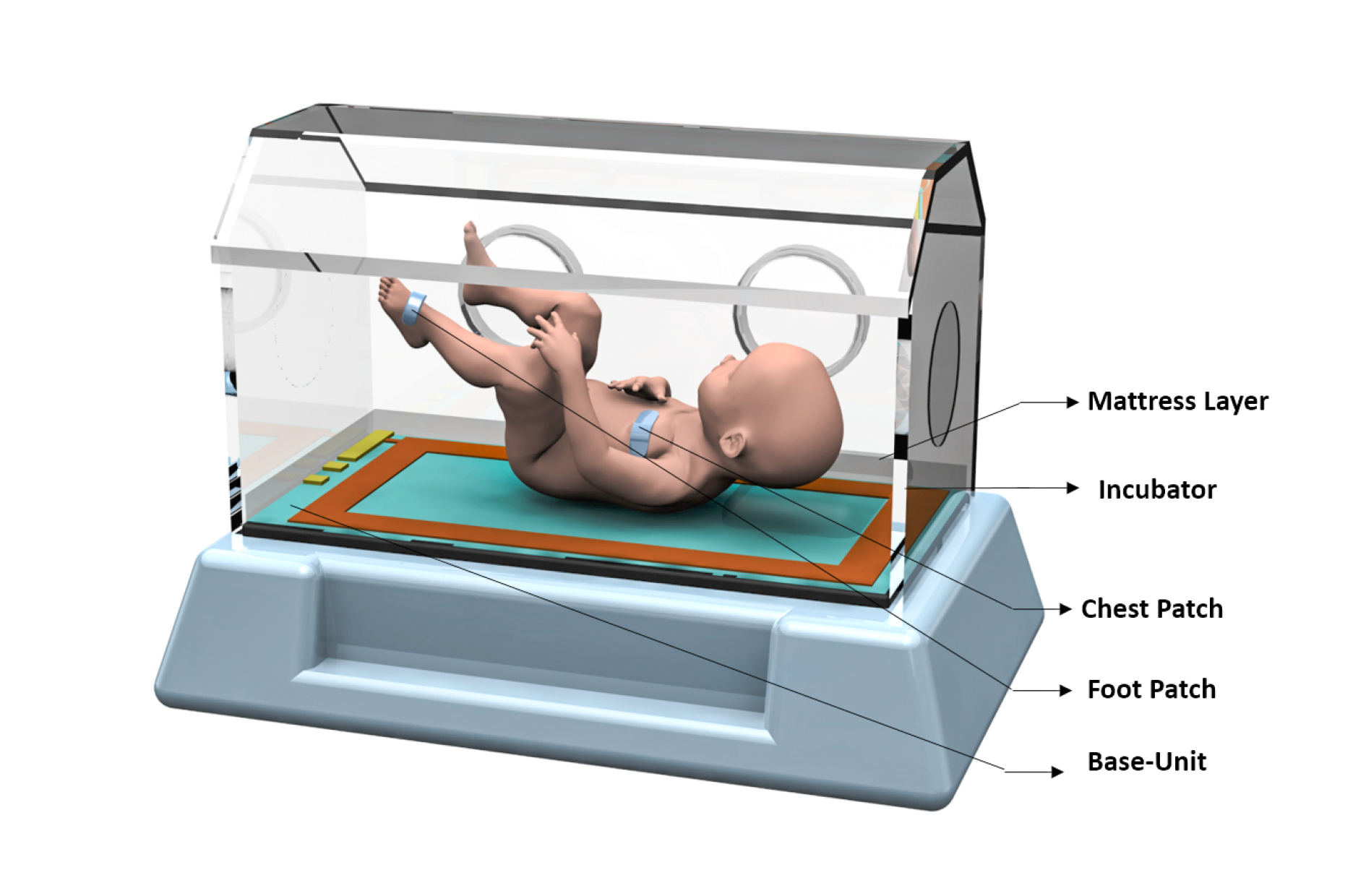Patch-IT: Multi-Sensor Sensor Nodes for Continuous Vital Sign Monitoring to Identify Novel Digital Biomarkers for Sepsis Detection in Neonatal Intensive Care
Neonatal sepsis has a high incidence globally and is a major cause of mortality worldwide. The project Patch-IT proposes a solution for improved neonatal sepsis monitoring and management. The team aims to develop a multi-sensor electronic epidermal system that incorporates wire-free, battery-free, non-invasive and autonomous monitoring of multiple vital signs continuously and in real-time. The device will also employ in-sensor data analytics propelled by state-of-the-art sensor-fusion algorithms to enable personalised patient monitoring. The overarching goal is to provide a system without a web of wires for continuous monitoring of vital signs of neonates and more effective detection of sepsis via digital biomarkers for better disease management and patient outcomes.
Sepsis is a life-threatening response of the body to infection. Neonatal sepsis occurs globally and is a major cause of mortality worldwide, with a high incidence rate of 3 million cases of neonatal sepsis and 1.2 million cases of paediatric sepsis annually. In the absence of a specific treatment, efficient patient monitoring and management are crucial for better patient outcomes. Continuous monitoring of vital signs of neonates is important for sepsis detection by identifying critical digital biomarkers. However, current monitoring platforms attach multiple wires to the neonate’s fragile and underdeveloped skin, thus creating a web of wires and on-body electrodes with aggressive adhesives. This combination not only leads to a higher risk of injury and skin lacerations but also makes basic clinical tasks difficult. Also, it impedes skin-to-skin contact between parent and child, which has been shown to have therapeutic value. Another roadblock to effective detection of the onset of sepsis is the dependency of previously developed prediction models on patient monitors. Even in high-income countries, the parameters from the patient monitors are only periodically updated after third party verification into electronic medical records. This delay, coupled with sparse data over time, leads to erroneous detection of sepsis and is not specific to the neonatal population.
The team aims to solve these roadblocks with PATCH-IT: a multi-sensor electronic epidermal system that incorporates wire-free, battery-free, non-invasive and autonomous monitoring of multiple vital signs continuously and in real-time. PATCH-IT includes measures of heart rate, heart rate variability, respiratory rate, blood oxygenation saturation, pulse transit time, core and peripheral body temperature, localised oedema, urine volume and activity. The system thus provides multi-sensor data specific to the needs of sepsis monitoring and in-sensor data analytics empowered by state of the art sensor-fusion algorithms personalised to every patient. Ultimately, the researchers aim to develop PATCH-IT into an effective solution for neonatal sepsis monitoring and management, with the goal to improve patient outcomes.

Patch-IT integrated into an incubator in a neonatal intensive care unit (NICU). The base unit is placed below the mattress, the c-patch is placed on the baby’s chest, while the f-patch is placed on the foot. Image: Kanika Dheman
Additional Information
- The research is part of the Postdoctoral Excellence Programme.
- PEP fellow Dr Kanika Dheman is hosted by BRCCH-funded Principal Investigator Dr Michele Magno.

